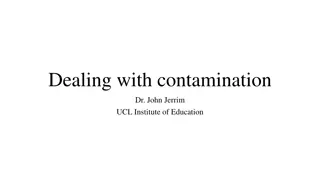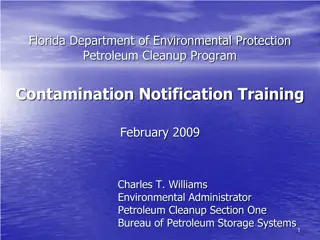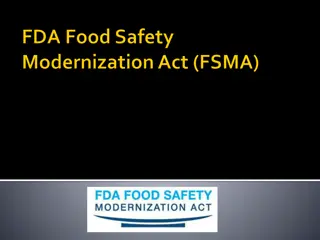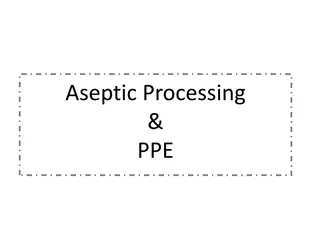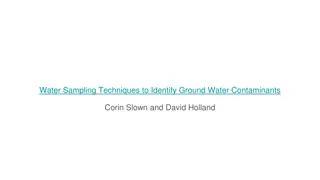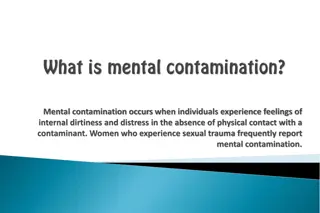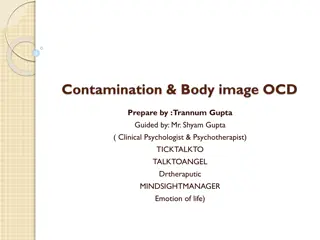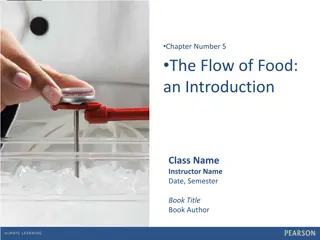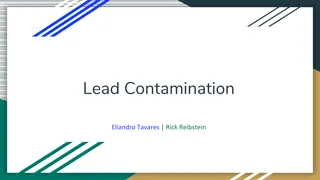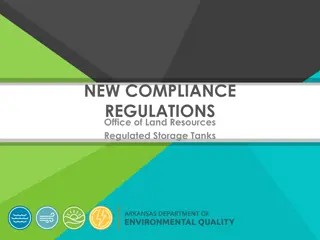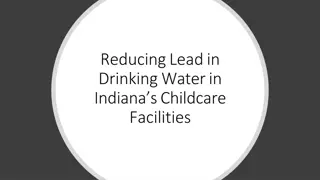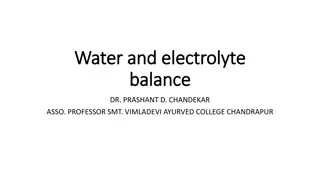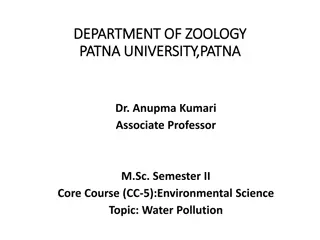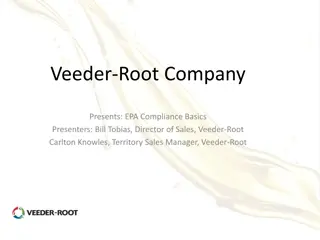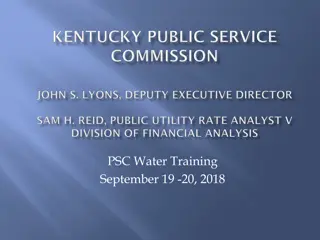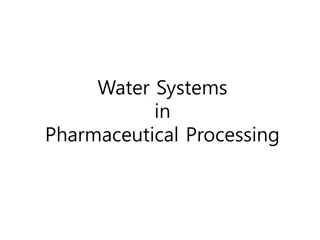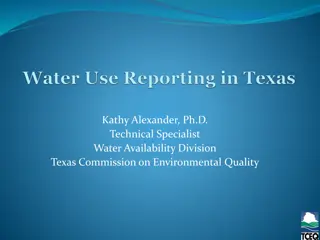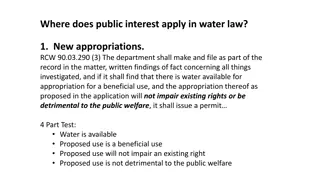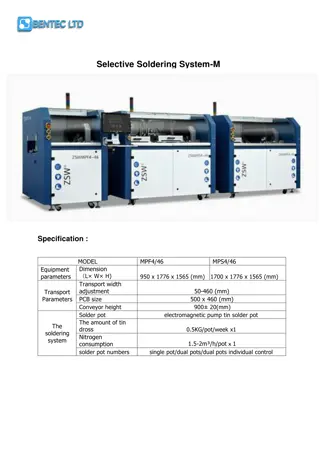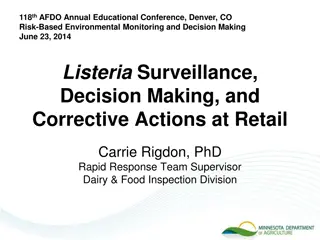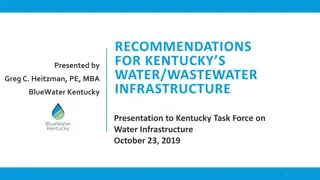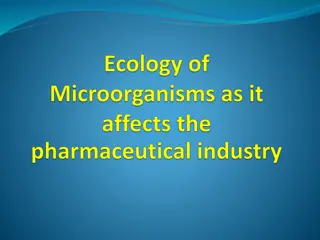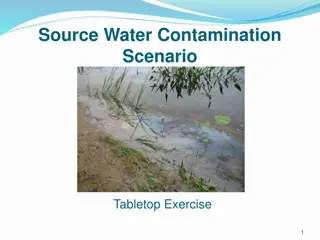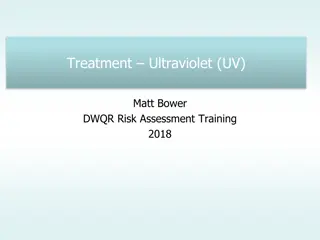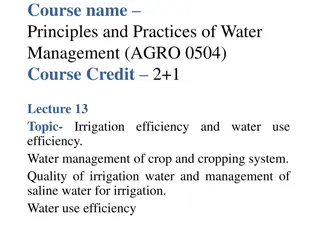Guidelines for Water Contamination Monitoring in Public and Non-Regulated Systems
Detailed information on priority violations related to microbiological contamination in public, non-community, and regulated water systems, outlining standards for approved water sources, sampling requirements, and monitoring compliance to ensure water safety.
- Water Contamination
- Public Water Systems
- Sampling Requirements
- Microbiological Contamination
- Compliance Monitoring
Download Presentation

Please find below an Image/Link to download the presentation.
The content on the website is provided AS IS for your information and personal use only. It may not be sold, licensed, or shared on other websites without obtaining consent from the author. Download presentation by click this link. If you encounter any issues during the download, it is possible that the publisher has removed the file from their server.
E N D
Presentation Transcript
Determination of Priority Violations Related Determination of Priority Violations Related to Microbiological Contamination in Public, to Microbiological Contamination in Public, Non Non- -Community Water Systems, Community Water Systems, or or Oregon Very Small Systems Oregon Very Small Systems or or Non Non- -Regulated Water Serving Restaurant Regulated Water Serving Restaurant
What does 5-101.11 say Drinking water shall be obtained from an approved source that is: (A) A public water system;P or (B) A nonpublic water system that is constructed, maintained, and operated according to law.P 5 5- -101.11 101.11 WHAT IS AN WHAT IS AN APPROVED APPROVED SYSTEM SYSTEM
5 5- -102.11 102.11 STANDARDS STANDARDS FOR FOR NONPUBLIC NONPUBLIC WATER WATER SYSTEMS SYSTEMS What does 5-102.11 say Outlines several requirements for Sampling Reporting Public Notice Plan Review
Surface Water System Sample monthly Year-Round Ground Water System Sample quarterly Seasonal Ground Water System Monthly during operation. Only TNC and Non-Transient Non-Community - NTNC Sampling Sampling Periods Periods for Public for Public Water Water Systems Systems
Failure to Monitor and Report for Microbial Contaminants (Total Coliform (TC) and/or E. coli No confirmed positive total coliform or E. coli violations over the past three years. Priority violation if Failure to monitor for two consecutive monitoring periods. System Has Confirmed TC or E. coli in the last 3 years Priority violation A single failure to sample as required in the previous sampling period. 5 5- -101.11 101.11 Failure to Failure to Monitor Monitor
Determining Compliance Current sampling period should not be considered. Use previous sampling period/periods 5 5- -101.11 101.11 Failure to Failure to Monitor Monitor
Example Inspection occurs in the 4thquarter Groundwater facility with no maximum contaminant level (MCL) violations in the last three years System did not test in either the 2ndor 3rdquarter Priority violation Seasonal Groundwater Facility with MCL violation in the last three years. Failure to monitor during the previous month. Priority violation 5 5- -101.11 101.11 Failure to Failure to Monitor Monitor
Priority Violations require immediate correction or alternative measures in place. Alternative Measures If applicable, post a public notice as required by the Drinking Water Rules (OAR 333-061-0042). Provide verification from lab that samples have been submitted for analysis. Corrective Procedure Obtain current lab test that complies within 14 days. Results must be reported to Drinking Water Program. Failure to Failure to Monitor Monitor Required Required Corrections Corrections
5 5- -501.11 501.11 Exceeding Exceeding MCLs for MCLs for Microbial Microbial Contaminants Contaminants Exceeding MCLs for Microbial Contaminants as described in OAR 333-61-0030. Confirm with the Drinking Water Program (Phone #: 971-673-0405) that the water system has exceeded MCLs for microbial contaminants. Determine if any further consultation should occur with the Drinking Water Program and Foodborne Illness Prevention Program.
Alternative Measures If applicable, Post a public notice, as required by DWP rules (OAR 333-061-0042) . Develop procedures that eliminate the use of contaminated water for food preparation, utensil washing, employee and patron hygiene, or any other operations deemed to pose a public health risk. Develop a schedule for correction of the violation. Exceeding MCL Exceeding MCL Required Required Corrections Corrections
Corrective Procedure Operator must have current laboratory analysis indicating compliance with microbiological maximum contaminant levels (MCL) standards. Operator must assure that results have been reported to DW. Exceeding MCL Exceeding MCL Required Required Corrections Corrections
5.101.11 5.101.11 Interruption Interruption of required of required treatment. treatment. Alternative Measures Post public notice as required by DWP rules. Develop methods to reduce the use of potable water. Measure effectiveness of treatment as appropriate, for example, chlorine levels at tap.
5 5- -101.11 101.11 Interruption Interruption of required of required treatment. treatment. Corrective Procedure Re-establish treatment process. Provide laboratory analysis confirming compliance with MCL s. To Drinking Water.
Questions? Questions?


